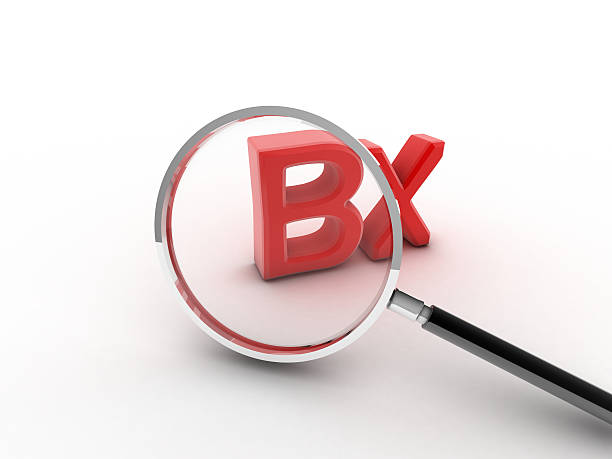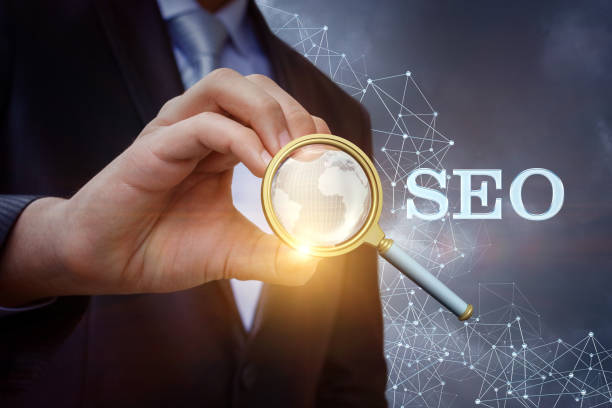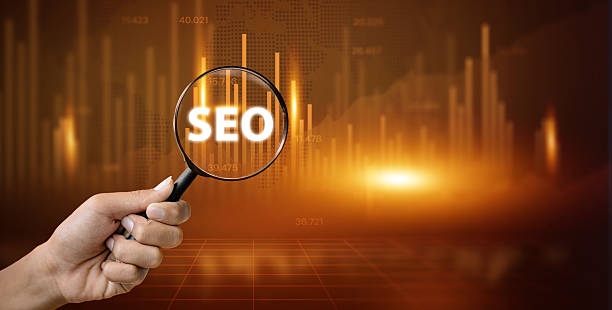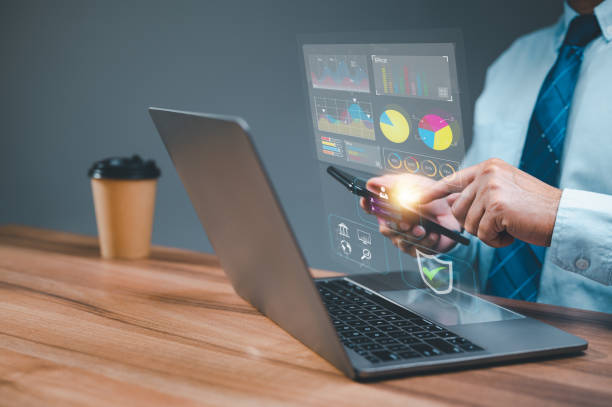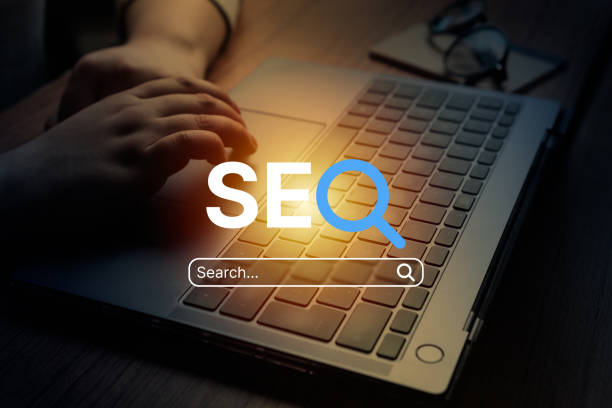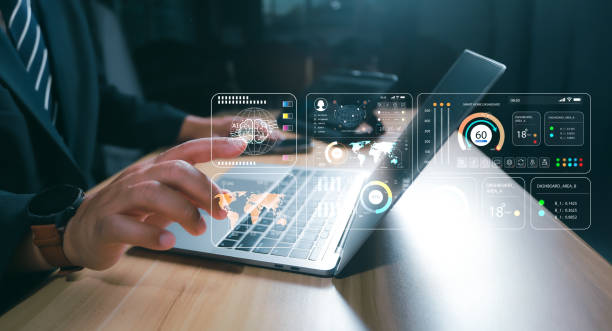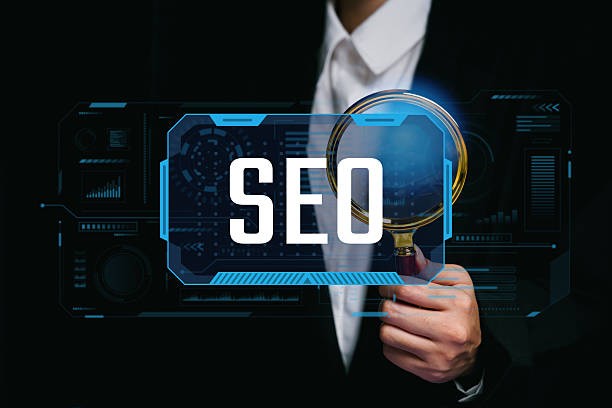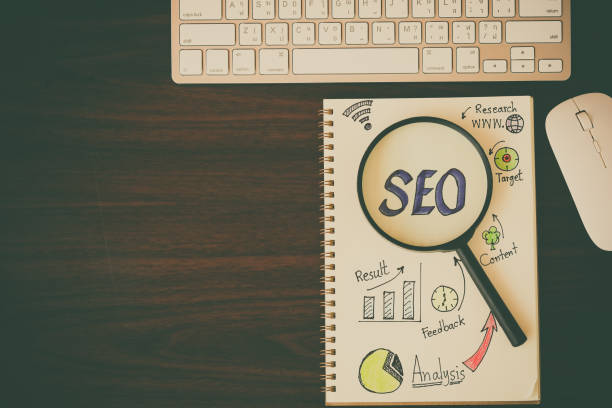Introduction to On-Page SEO and its Importance
In today’s highly competitive world, an online presence isn’t enough with just a beautiful website; you must ensure your target audience can find your website.
This is where the role of #On-Page SEO becomes prominent.
On-Page SEO refers to a set of actions you perform within your website and on its content to achieve a better ranking in search engine results.
These actions include optimizing various elements such as titles, meta descriptions, URL structure, content, images, and internal linking.
The primary goal of On-Page SEO is to help search engines better understand the topic and relevance of your pages to specific keywords.
This section provides explanatory and educational content for a basic understanding of this concept.
Without a strong strategy in website optimization, even the highest quality content might go unnoticed.
Focusing on this type of SEO helps you attract more organic traffic and ultimately achieve your business goals.
This process not only helps search engines but also users to have a better experience on your website and easily find the information they need.
Does your current corporate website not reflect your brand’s credibility and power as it should? Rasawab solves this challenge for you with professional corporate website design.
✅ Increase visitor credibility and trust
✅ Targeted attraction of more customers
⚡ Click for a free consultation!
Keyword Research; The Cornerstone of On-Page SEO
One of the most important steps in effective On-Page SEO implementation is conducting comprehensive and precise keyword research.
Keywords are phrases that users employ to search for information, products, or services in search engines.
Choosing appropriate keywords helps you produce content that precisely meets the needs of your target audience.
This process involves identifying primary and secondary keywords, examining search volume, competition level, and the user intent behind each search.
A specialized keyword research provides valuable insights into which phrases hold the most potential for your business.
Tools like Google Keyword Planner, Ahrefs, and Semrush can be highly beneficial at this stage, offering precise analytical data.
After identifying keywords, you should strategically use them in various page elements, including titles, meta descriptions, headers, body content, and image Alt Text.
This helps search engines understand the relevance of your content to those specific keywords, leading to a better ranking for your page.
Remember, the goal is not to stuff content with keywords, but to use them naturally and beneficially to maintain content readability.
Content Optimization; The Beating Heart of On-Page SEO
Content is king; this phrase never gets old in the SEO world.
On-Page SEO is almost meaningless without high-quality, optimized content.
Your content should not only be appealing to search engines but also valuable and guiding for users.
This includes writing comprehensive, accurate, and unique texts that answer user questions and provide useful information.
You should ensure your content is readable, uses short paragraphs, lists, and subheadings to improve the user experience.
Additionally, using related keywords (LSI keywords) instead of repeatedly using the main keyword helps search engines better understand the overall concept of your content.
This approach means producing explanatory and specialized content.
Also, ensuring content freshness and regular updates can send positive signals to search engines.
Here is a table of content types and their impact on On-Page SEO:
| Content Type | Features | Impact on On-Page SEO |
|---|---|---|
| Educational Content | Step-by-step, problem-solving, FAQ | Increased credibility, targeted traffic attraction, answering common questions |
| Analytical Content | In-depth review, data-driven, comparative | Attracting expert audience, increased user time on page |
| News Content | Fresh, up-to-date, event-related | Gaining quick traffic, increasing site Authority |
| Entertaining Content | Infographics, videos, quizzes | Increased user engagement, reduced bounce rate, improved user signals |
| Thought-Provoking Content | Controversial, challenging, survey | Creating discussion, increased comments and shares |
Quality content should not only answer questions but also pique users’ curiosity and encourage them to interact more with the website.
This can be achieved through providing thought-provoking content or using appropriate semantic formats.
URL Structure and Site Architecture for On-Page SEO
Your URL structure and overall website architecture play a very important role in On-Page SEO.
A clean, short URL that includes the main keyword is not only more understandable for search engines but also helps users comprehend the page’s topic before clicking.
For example, instead of long URLs full of incomprehensible characters, use a structure like `yourdomain.com/category/keyword-phrase`.
This logical and hierarchical structure helps search engines crawl and index your pages.
Furthermore, site architecture refers to how pages are organized and internally linked to each other.
Good site architecture means using a tree or silo structure that categorizes related pages into logical groups.
This helps distribute “Link Equity” throughout your site and increases the authority of important pages.
Creating a Sitemap and submitting it to webmaster tools helps search engines discover all your pages.
This section provides practical guidance on how to organize your content for maximum On-Page SEO effectiveness.
The more logical your site structure and the easier it is to access pages, the better your user experience will be, and search engines will better understand your content.
These optimizations are vital for your excellent content to be correctly recognized by search engine robots.
Are you tired of your e-commerce website not generating as much revenue as it could? Rasawab, specializing in professional e-commerce website design, solves this problem permanently!
✅ Increased sales rate and revenue
✅ High loading speed and unparalleled user experience
⚡ Get a free e-commerce website design consultation
Title Tags and Meta Descriptions; The First Impression for Search Engines and Users
Title Tags and Meta Descriptions are the first things both users and search engines see when your page appears in search results.
Therefore, optimizing them is crucial for On-Page SEO.
The title tag should include your main keyword and clearly state the page’s topic.
This tag must be appealing and persuasive to encourage users to click.
The ideal length for a title tag is usually between 50 to 60 characters to be fully displayed in search results.
The meta description is a short, enticing summary of your page’s content, aiming to attract users and increase the click-through rate (CTR).
Although meta descriptions do not directly influence ranking, they can indirectly send positive signals to search engines by increasing CTR.
These descriptions should include the main keyword and a Call to Action, typically around 150-160 characters.
This section is a type of explanatory content that teaches you how to create appealing pieces of information for display in search results.
Intelligent use of these two elements can drive significant traffic to your site and provide a more engaging experience for the user from the very beginning.
Precise optimization of these elements is a key component of a comprehensive On-Page SEO strategy.
Click here to preview your posts with PRO themes ››
Image and Video Optimization for On-Page SEO
Visual content, including images and videos, not only enhances the user experience but also provides new opportunities for On-Page SEO.
For images, the most critical optimization factor is the use of Alt Text or alternative text.
Alt Text should be descriptive of the image and, if possible, include a keyword relevant to the page.
This text helps search engines understand the image content, especially for users who rely on screen readers or if the image fails to load.
Compressing images to reduce their size without significant quality loss is also very important, as it improves page loading speed.
Additionally, naming image files descriptively and relevantly (e.g., `keyword-image.jpg` instead of `IMG001.jpg`) also impacts optimization for search engines.
For videos, in addition to file optimization (like compression), adding captions and transcripts can help search engines understand the video content.
Using Schema Markup for videos can also lead to their display in Rich Snippets in search results.
These are specialized approaches to strengthening On-Page SEO through multimedia content and can drive significant traffic from image and video searches to your site.
Optimizing these visual elements not only helps with better discoverability but also indirectly affects page ranking by increasing user experience and user dwell time.
Internal Linking and Navigation Improvement; Your Site’s Communication Network
Internal linking is one of the most powerful tools available in On-Page SEO.
Internal links show the connection between different pages of your website and help search engines understand the structure and importance of pages.
These links also help transfer Page Authority throughout your site and strengthen new or more important pages.
Furthermore, a strong internal linking structure allows users to easily navigate your website and find relevant information, which in turn improves the User Experience (UX).
When internal linking, using relevant and descriptive Anchor Text is very important.
Instead of “click here”, use phrases like “comprehensive guide to On-Page SEO”.
This gives clear signals to search engines and users about the content of the destination page.
Your site’s navigation structure, such as main and sub-menus, should also be designed to be easy and intuitive to use.
This section contains guidance and specialized content for creating a powerful communication network on your site.
Correct internal linking means intelligently distributing SEO “power” among the various pages of your website.
Here is a table of best practices for internal linking:
| Method | Description | Impact on On-Page SEO |
|---|---|---|
| Contextual Links | Linking from relevant content to other pages | Best method for transferring authority and increasing discoverability |
| Navigation Menu | Using main and sub-menus for easy access | Improved user experience and assistance for search engine crawling |
| Footer | Important links such as contact us, privacy | Easy access to important pages but with less SEO weight |
| Sidebar | Link to popular or related posts | Increased engagement and authority distribution in some structures |
| HTML Sitemap | A page with a list of all site links | Helps search engines find all pages |
Click here to preview your posts with PRO themes ››
Internal links and effective navigation are vital for both users and search engines.
They directly impact the discoverability and understanding of your content and are an integral part of any strong On-Page SEO strategy.
Site Loading Speed and User Experience; Indirect On-Page SEO Factors
Although site loading speed and User Experience (UX) are not directly considered classic On-Page SEO elements, they significantly impact your website’s ranking and success.
Search engines, especially Google, consider site speed and UX quality as important ranking factors.
A slow website can lead to a high Bounce Rate and reduced user dwell time on the page, both of which send negative signals to search engines.
Factors such as image compression, code optimization (CSS, JavaScript), use of CDN (Content Delivery Network), and choosing suitable hosting all contribute to improving site speed.
In addition to speed, user experience is also of high importance.
Your website should be Responsive, meaning it displays correctly on various devices (mobile, tablet, desktop) and is easy to use.
Simple navigation, appealing visual design, and accessible content all contribute to creating a positive user experience.
Google’s Core Web Vitals, which include metrics like LCP, FID, CLS, directly address the engaging and performance aspects of user experience and are now used as ranking factors.
This section, as a specialized and news-related guide on the latest Google algorithm updates, highlights the importance of these factors in On-Page SEO.
Improving these factors not only helps increase search results ranking but also boosts user satisfaction, ultimately enhancing your website’s overall performance.
Does your current site display your brand’s credibility as it should? Or does it scare away potential customers?
Rasawab, with years of experience in professional corporate website design, is your comprehensive solution.
✅ A modern, beautiful site tailored to your brand identity
✅ Significant increase in lead and new customer acquisition
⚡ Contact Rasawab now for a free corporate website design consultation!
Schema Markup and Structured Data; A Common Language with Search Engines
Schema Markup and Structured Data are powerful tools for increasing your website’s visibility in search results and play a key role in On-Page SEO.
Schema is code you add to your site’s HTML to help search engines better understand the content of your pages.
These structured data provide specific information about your content to search engines, such as whether a page is about a recipe, a product, an event, or an article.
When search engines understand this information, they can display your pages in richer ways (like Rich Snippets) in search results, which can significantly increase the click-through rate (CTR).
For example, for a recipe, you can include details like cooking time, calories, and user ratings in the schema, which will appear in search results.
Using schema effectively provides a kind of analytical and specialized content for search engines, making your page stand out among competitors.
This means you “tag” information in a way that machines can easily process it.
Tools like Google’s Structured Data Markup Helper can assist you in creating these codes.
Correct implementation of Schema Markup is an important step in optimizing On-Page SEO to achieve top positions in SERPs (Search Engine Results Pages) and helps your site become more visible in search results.
Monitoring and On-Page SEO Tools; Continuous Monitoring for Improvement
After implementing all On-Page SEO measures, your work has just begun.
On-Page SEO is an ongoing process and requires continuous monitoring and optimization.
To ensure the effectiveness of your strategies and identify new opportunities or issues, you must regularly monitor your website’s performance.
Tools like Google Search Console and Google Analytics provide valuable information regarding organic traffic, keywords, click-through rates, and user behavior.
Google Search Console helps you identify technical issues such as crawl errors, indexing problems, and mobile-friendliness issues.
You can also review your keyword performance and see which pages attract the most traffic.
Google Analytics provides more detailed information about user behavior on your site, such as dwell time on page, bounce rate, and user paths within the site.
By analyzing this data, you can improve your content and optimize the user experience.
This section contains educational and guidance content that helps you continuously improve your On-Page SEO using these tools.
Paid tools like Ahrefs, Semrush, and Moz also offer deeper insights and advanced capabilities for keyword research, competitor analysis, and backlink checking.
Regular monitoring and responding to data are key to maintaining and improving your ranking in search results and ensuring long-term success in the online space.
Click here to preview your posts with PRO themes ››
Frequently Asked Questions
| Row | Question | Answer |
|---|---|---|
| 1 | What is On-Page SEO? | On-Page SEO refers to a set of actions performed within a website (on its pages) to improve its ranking in search engine results. This includes optimizing content, site structure, and HTML codes. |
| 2 | Why is On-Page SEO important? | On-Page SEO helps search engines better understand page content and determine whether that page is relevant and valuable for user searches. This better understanding leads to higher rankings. |
| 3 | What is the first and most important step in On-Page SEO? | Keyword Research is the most important initial step. By finding appropriate keywords, targeted content relevant to user needs can be produced. |
| 4 | What is the role of the Title Tag in On-Page SEO? | The title tag is one of the most important ranking factors and should include the main keyword. This tag is displayed as the page title in search results and impacts the click-through rate (CTR). |
| 5 | What is the importance of Meta Description? | The meta description does not directly affect ranking, but by providing an attractive summary of the page’s content in search results, it can encourage users to click, thereby increasing the click-through rate (CTR). |
| 6 | Why is the use of headings (H1, H2, etc.) important in content? | Headings help structure content and improve readability for users and search engine crawlers. Using keywords in headings also helps search engines better understand the topic. |
| 7 | What does Image Optimization in On-Page SEO include? | Includes compressing images to reduce size, using descriptive and relevant file names, and filling the Alt tag (alternative text) with relevant keywords to help search engines understand the image content. |
| 8 | What is meant by Internal Linking in On-Page SEO? | Internal linking refers to creating links between different pages of a website. This helps spread Link Equity, improve user experience, and assist search engine crawlers in discovering new pages. |
| 9 | Why is Page Speed important for On-Page SEO? | Page loading speed is a direct ranking factor and significantly impacts user experience. Slow pages can lead to an increased Bounce Rate and reduced user engagement. |
| 10 | What role does quality content play in On-Page SEO? | High-quality, comprehensive, unique, and valuable content for the user is the core of On-Page SEO. This content not only attracts and retains users but also sends positive signals to search engines, helping achieve a better ranking. |
And other advertising services from Rasa Web Advertising Agency
Smart Custom Software: A new service for increasing sales through attractive UI design.
Smart Link Building: Professional optimization to increase website traffic using precise audience targeting.
Smart Advertising Campaigns: Revolutionize SEO ranking improvement with customized user experience.
Smart SEO: A new service for increasing website traffic through an SEO-driven content strategy.
Smart Digital Advertising: Designed for businesses seeking to attract customers through Google Ads management.
And over a hundred other services in internet advertising, advertising consultation, and organizational solutions
Internet Advertising | Advertising Strategy | Advertorials
Sources
The Role of On-Page SEO in Site Success
Comprehensive Guide to On-Page SEO
Why On-Page SEO is Crucial
Improving Site On-Page SEO
? Rasaweb Afarin Digital Marketing Agency, specializing in providing innovative solutions including secure website design and SEO optimization for your business’s sustainable growth.
📍 Tehran, Mirdamad Street, Next to Central Bank, Kazeroon Jonubi Alley, Ramin Alley, No. 6


